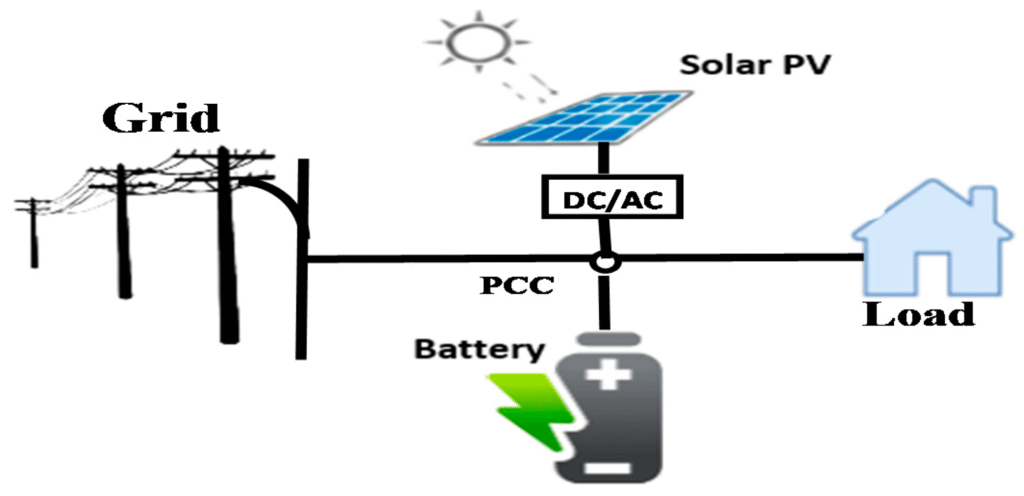
Low Voltage Solar Systems (Low Voltage DC Systems)
Low voltage solar systems are commonly used in small-scale and residential applications. They rely on low direct current (DC) voltages such as 12V, 24V, or 48V.
How the System Works:
Solar panels produce low voltage that is stored in suitable batteries.
The electric current is transferred to the inverter to be converted into alternating current (AC).
The energy is either used directly or stored in batteries for later use.
Advantages:
Higher safety compared to high-voltage systems, making it suitable for homes.
Easy installation and maintenance without the need for highly skilled technicians.
Lower component costs, especially for batteries and inverters.
Ideal for small and medium systems in homes, farms, and vehicles.
Flexibility for simple expansion.
Disadvantages:
Higher electrical losses due to higher current.
Requires thick and expensive wiring over long distances to reduce losses.
Inefficient for large projects due to the need for high current.
More affected by weather and heavy loads.
Relatively lower efficiency compared to high-voltage systems.
Real-World Data and Figures (Example):
| Item | Typical Value |
|---|---|
| Used Voltage | 12V, 24V, 48V DC |
| Electric Current | High (10–100 Amps) |
| System Capacity | 1 to 3 kW |
| System Efficiency | 85% – 92% |
| Wire Loss over 10m | Up to 10% |
| System Cost | $1,000 – $4,000 |
| Battery Lifespan | 3 – 5 years |
| Typical Usage | Lighting, device charging, small pumps |
Comparison: Low Voltage vs. Other Systems
| Criterion | Low Voltage | High Voltage | Hybrid / On-Grid |
|---|---|---|---|
| Voltage | 12 – 48V DC | 600 – 1000V DC | 220 – 380V AC |
| Safety Level | High | Relatively low | Medium |
| Wire Loss | High | Very low | Medium |
| Suitable for Long Distances | No | Yes | Yes |
| Best Use Case | Small homes and farms | Industrial and commercial systems | Homes and grid-connected systems |
| Cost | Low | High | Medium – High |
Summary:
Low voltage systems are the ideal choice for beginners or areas that don’t require high energy. Thanks to their low cost and easy installation, they are perfect for rural homes, basic lighting systems, or portable setups. However, they are not suitable for large-scale systems due to high energy losses.
